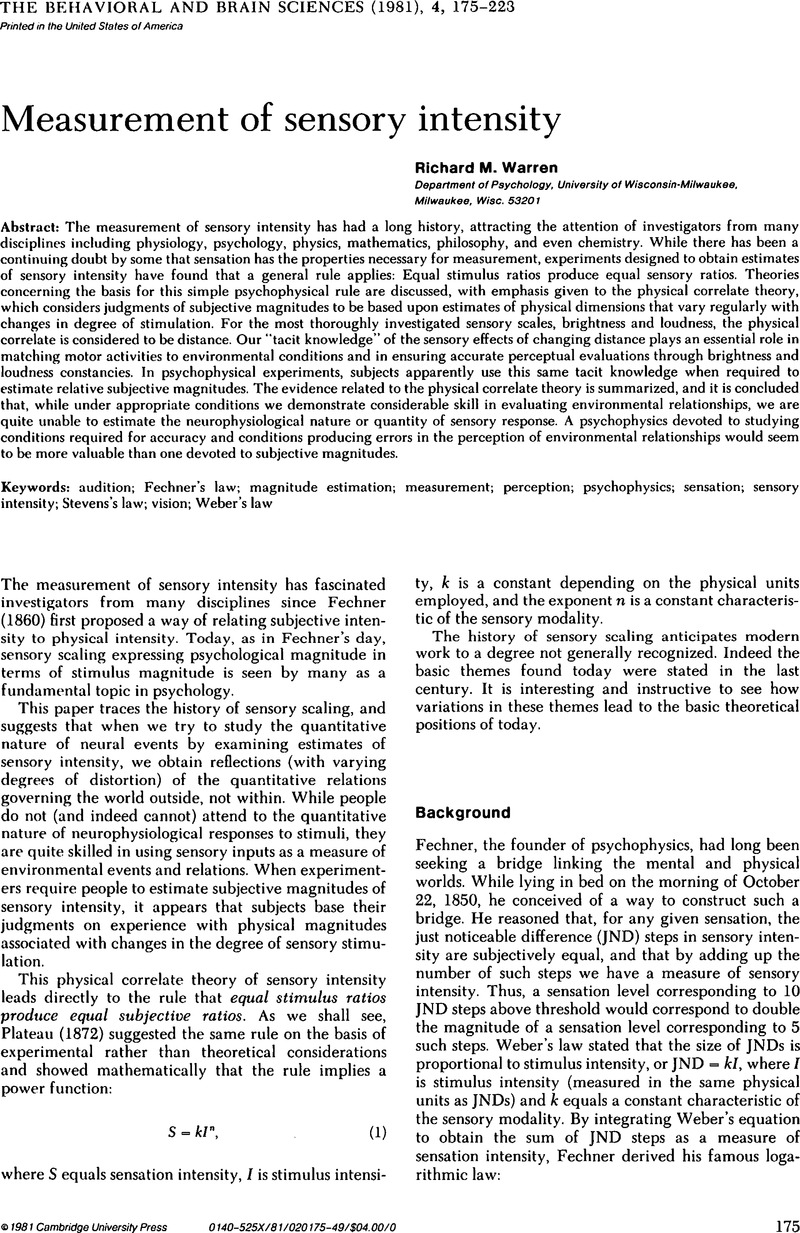Crossref Citations
This article has been cited by the following publications. This list is generated based on data provided by Crossref.
Penchev, A.
Kurtev, A.
and
Vassilev, A.
1983.
The neurophysiological code and sensory magnitude.
Behavioral and Brain Sciences,
Vol. 6,
Issue. 2,
p.
317.
Warren, Richard M.
1983.
The calibration of sensory scales.
Behavioral and Brain Sciences,
Vol. 6,
Issue. 2,
p.
319.
Geissler, Hans-Georg
1983.
Physical correlate theory versus the indirect calibration approach.
Behavioral and Brain Sciences,
Vol. 6,
Issue. 2,
p.
316.



